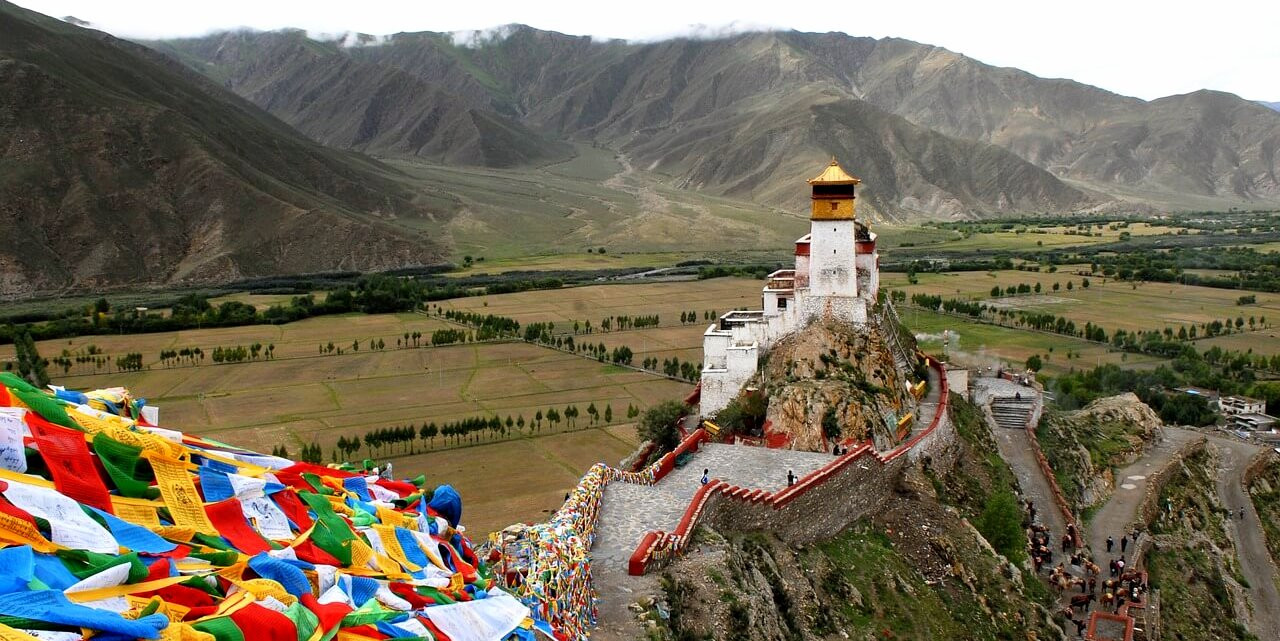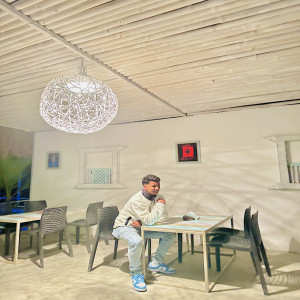Potala Palace
The Potala Palace in Lhasa, Tibet, is not only a spectacular architectural feat but also a deeply significant cultural and spiritual symbol. Originally built in the 7th century by King Songtsen Gampo, it was later reconstructed in the 17th century by the 5th Dalai Lama, who established it as the winter residence for successive Dalai Lamas. Perched majestically on Marpo Ri hill, the palace dominates the Lhasa skyline, offering a breathtaking view of the entire city.
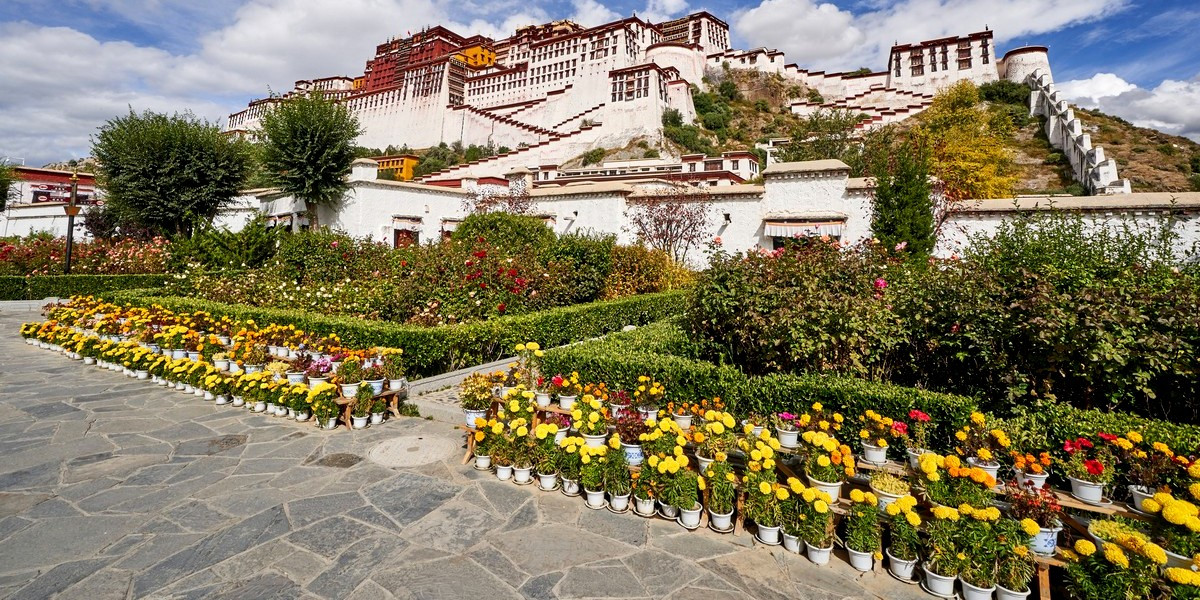
-
Architectural Splendor: The palace is renowned for its stunning architecture, which showcases the intricacies of Tibetan design. It is divided into two main parts: the White Palace, which served as the administrative quarters, and the Red Palace, which is dedicated to religious study and Buddhist prayer. The entire structure is made up of over 1,000 rooms, 10,000 shrines, and about 200,000 statues, all intricately designed and richly decorated.
-
Cultural Significance: As the former governmental palace of Tibet and a religious center, the Potala Palace holds immense historical and cultural importance. It houses countless artifacts, including murals, paintings, scriptures, and jewels, each telling stories from Tibet's past. The palace is also an important pilgrimage site for Tibetan Buddhists, who often visit to pay homage and absorb the sanctity of the site.
-
Tourist Attraction: The Potala Palace is one of Tibet's most visited landmarks, attracting visitors from around the world. Due to its historical value and stunning beauty, UNESCO designated it a World Heritage Site in 1994. Tourists visiting the palace can explore various chapels, galleries, and tombs, including those of past Dalai Lamas, which are adorned with gold and precious stones.
-
Preservation Efforts: Given its age and the fragile nature of its materials, maintaining the palace is an ongoing challenge. The Chinese government and various international organizations have implemented measures to preserve this iconic structure, ensuring that it withstands the test of time and remains a source of pride and spiritual inspiration for future generations.
The Potala Palace is a must-see for anyone visiting Tibet, offering a unique blend of religious sanctity, historical depth, and architectural mastery.
Mount Everest Base Camp
Mount Everest Base Camp on the Tibetan side, known as the North Base Camp, is an extraordinary destination for adventurers seeking to experience the magnificence of the world's highest peak up close. Unlike its Nepalese counterpart, the North Base Camp in Tibet offers a different perspective of Mount Everest, with access that is both more direct and less crowded, providing a unique and serene experience.
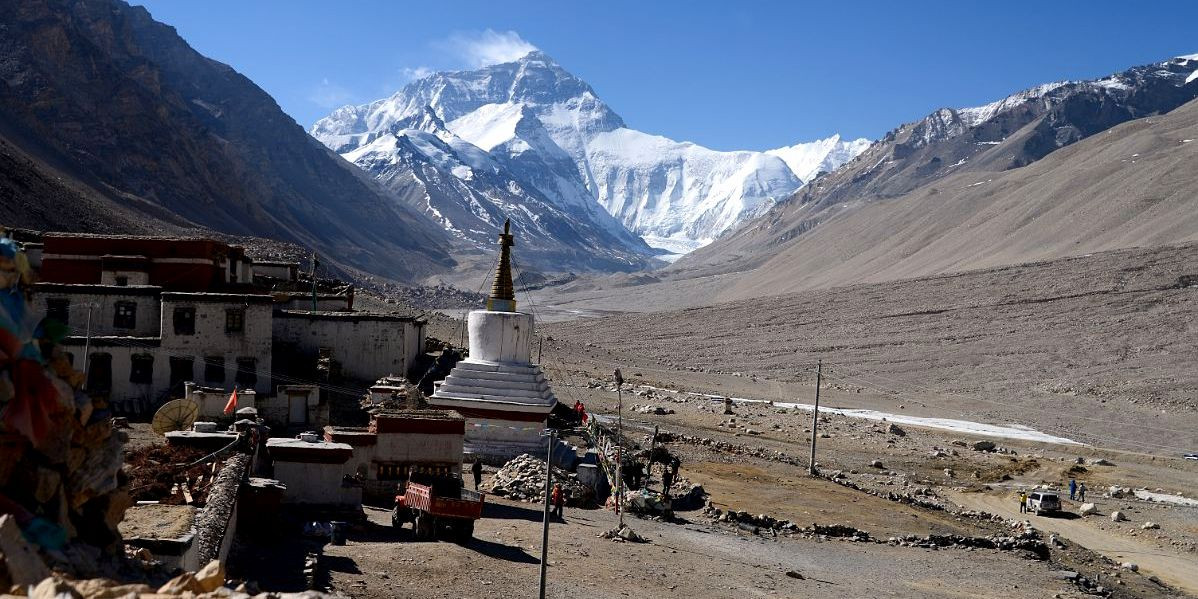
-
Location and Access: The North Base Camp is situated in Tibet's Tingri County, at an elevation of approximately 5,200 meters (17,060 feet). Access to this base camp is generally easier compared to the South Base Camp in Nepal, as visitors can drive much closer to the camp, thanks to the paved roads leading up to the Rongbuk Monastery, which is near the base camp.
-
Spectacular Views: The North Base Camp provides stunning views of the north face of Mount Everest. From here, visitors can gaze upon the towering peak and its surrounding giants such as Changtse, Lhotse, and Nuptse. The landscape around the base camp is rugged and barren but strikingly beautiful, dominated by rocky terrain and dramatic ice formations.
-
Adventure and Trekking: While many visitors come to the base camp as part of a tour, others undertake the challenging trek from the town of Tingri, which takes about four days. This trek offers more than just physical challenge; it's a journey through some of the most breathtaking scenery on the planet, enriched by encounters with local Tibetan culture and wildlife.
-
Regulations and Permits: Access to the North Base Camp has become more regulated over the years to preserve the environment and manage the impact of tourism. Visitors need a permit to enter, and these are typically arranged by tour operators as part of a travel package. China has intermittently restricted access to the base camp, so it's essential to check the current conditions and regulations before planning your trip.
-
Cultural Experience: Visiting the North Base Camp also offers a cultural dimension as it involves passing through several Tibetan towns and villages. The Rongbuk Monastery nearby is a significant Buddhist site, adding a spiritual element to the journey. Visitors often interact with local monks and learn about their traditions and way of life, which is deeply intertwined with the natural environment.
Mount Everest Base Camp on the Tibetan side is not just an excursion; it's an immersion into an extraordinary landscape and a vibrant culture. It appeals to trekkers, mountaineers, and anyone looking to touch the edge of the sky, making it a truly once-in-a-lifetime experience.
Jokhang Temple
Jokhang Temple, situated in the heart of Lhasa, Tibet, is one of the most revered and significant religious sites in Tibetan Buddhism. This temple is often considered the spiritual center of Tibet and serves as a pivotal pilgrimage destination for Tibetan Buddhists from across the region.
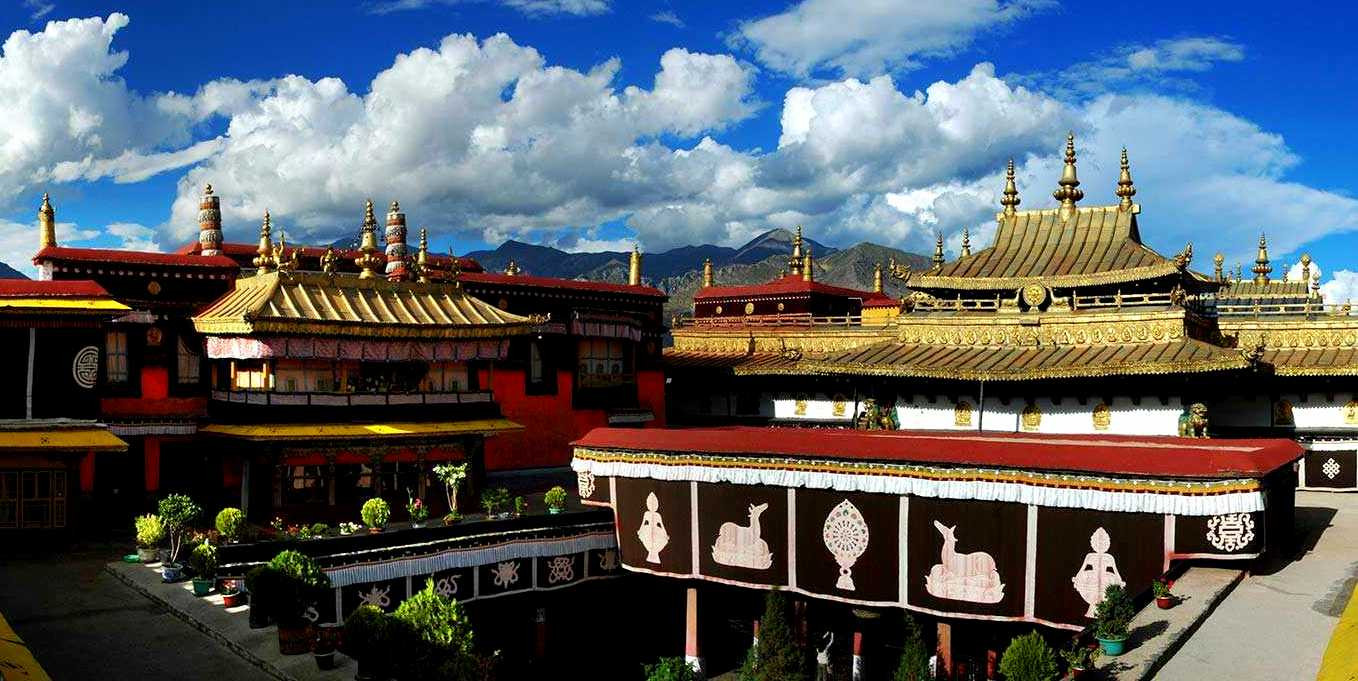
-
Historical Background: Constructed in the 7th century, the Jokhang Temple was originally built by King Songtsen Gampo to house the sacred statues of Buddha brought to Tibet by his two foreign wives. Over the centuries, the temple has undergone numerous renovations and expansions but has retained its religious significance and remains a focal point of Tibetan religious life.
-
Architectural Significance: The architecture of Jokhang Temple is a stunning blend of Indian vihara design, Tibetan, and Nepalese architectural elements, reflecting the diverse cultural influences that have shaped Tibet. Its intricate wood carvings, metalwork, and statues are examples of Tibetan religious art at its finest. The layout of the temple, with its numerous chapels and halls surrounding the central sacred shrine, facilitates the devotional practices of the pilgrims who visit.
-
Spiritual Importance: At the core of the temple is the sacred statue of Jowo Rinpoche, a life-sized image of the Buddha at age twelve, which is considered among the most sacred objects in Tibetan Buddhism. Pilgrims from all over Tibet come to Jokhang to prostrate themselves before this image, often after long and arduous journeys, making it a site of profound spiritual energy.
-
Cultural and Community Center: The Jokhang Temple is not only a spiritual hub but also a vital cultural center. It stands at the center of the Barkhor, a sacred circumambulation route and bustling market area, which reflects the dynamic nature of Lhasa as both a spiritual and secular center. This area is always lively, filled with pilgrims, tourists, monks, and locals, showcasing a vibrant mix of Tibetan culture, commerce, and spirituality.
-
Pilgrimage and Festivals: The temple is the focal point for numerous Buddhist festivals throughout the year, most notably the Monlam Prayer Festival following Tibetan New Year, which attracts thousands of pilgrims. During these events, the Jokhang becomes the epicenter of prayers, rituals, and dances, further highlighting its spiritual and cultural importance.
Visiting Jokhang Temple offers an unparalleled glimpse into the devotion and religious practices of Tibetan Buddhism. It provides visitors not only a historical perspective but also a profound spiritual experience, capturing the essence of Tibetan identity and faith.
Namtso Lake
Namtso Lake, also known as the "Heavenly Lake," is one of Tibet's most breathtaking natural wonders and a spiritual beacon for both locals and visitors. Situated at an elevation of about 4,718 meters (15,479 feet) above sea level, Namtso is the second-largest saltwater lake in China and one of the highest-altitude lakes in the world.
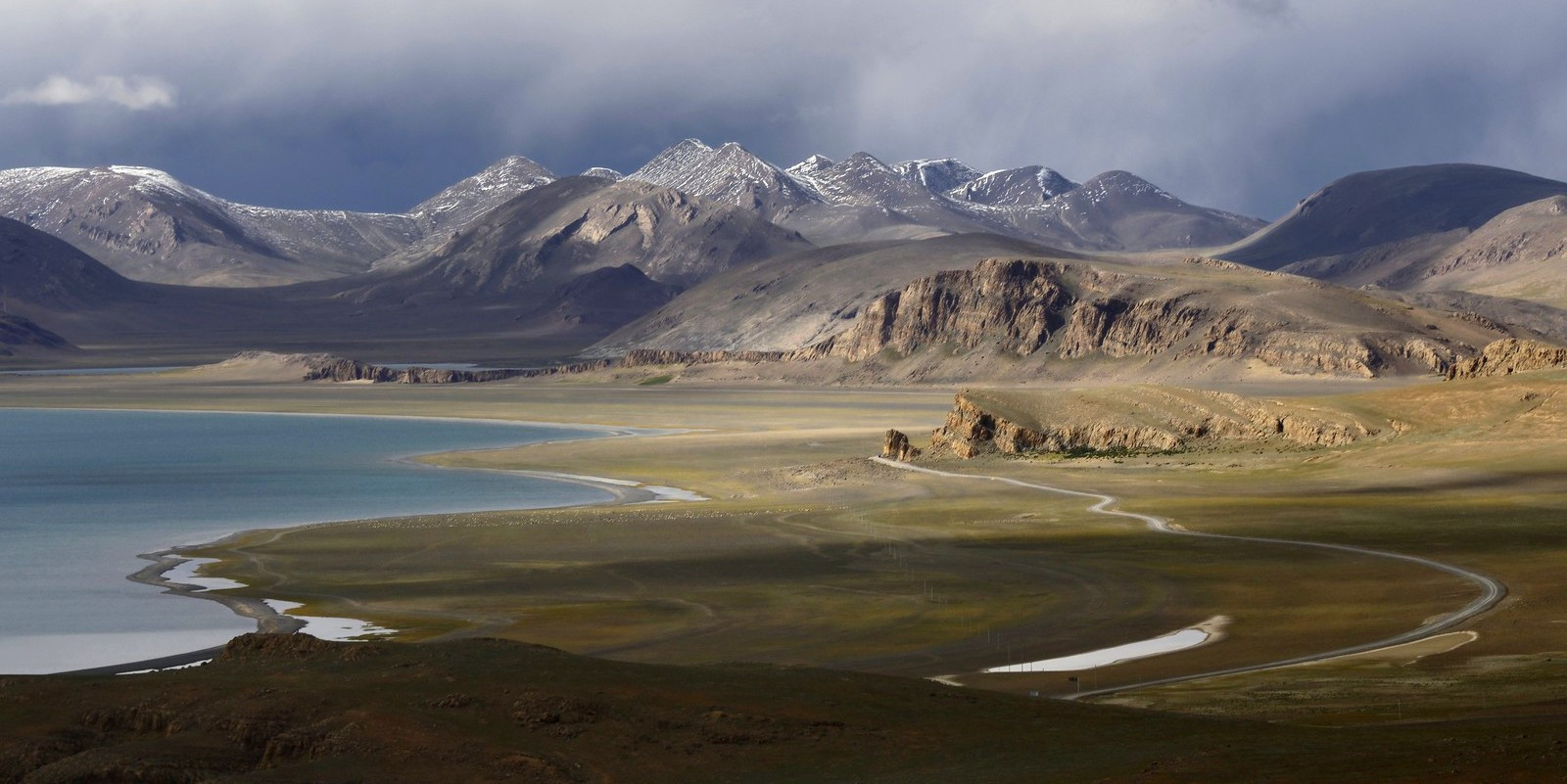
-
Natural Beauty and Geographic Setting: Namtso is renowned for its stunning natural beauty, characterized by its crystal-clear blue waters and the spectacular backdrop of snow-capped mountains. The lake covers an area of approximately 1,920 square kilometers (740 square miles), and its surface reflects the sky, creating a serene and almost surreal landscape. The surrounding area is dotted with vast open grasslands and populated by nomadic Tibetans whose herds of yaks and sheep graze nearby.
-
Spiritual Significance: Namtso is considered a sacred site in Tibetan Buddhism. The name Namtso itself translates to "Heavenly Lake" in the Tibetan language, which reflects its importance in Tibetan spirituality. It is believed to be the seat of Paramasukha Chakrasamvara, one of the deities of the Buddhist pantheon. Every year, during the auspicious month of the Tibetan calendar, pilgrims from all over Tibet trek to the lake to partake in a ritual walk around its perimeter, a practice known as a kora.
-
Flora and Fauna: The environment around Namtso is rich in biodiversity, despite its high altitude. The lake area serves as a habitat for various bird species, making it a favored spot for bird watching. It is particularly known for migratory birds that stop at the lake. Additionally, the lake and its surroundings support a variety of plant species that have adapted to the cold, arid climate.
-
Access and Tourism: Namtso Lake is accessible via a paved road from Lhasa, with the journey taking approximately five hours by car. The infrastructure around Namtso has been developed to cater to tourists, providing basic accommodations and dining options. However, visitors are advised to prepare for the high altitude with appropriate health precautions.
-
Challenges and Conservation: The area around Namtso faces ecological challenges, including the effects of climate change and increased tourism, which have an impact on water levels and local biodiversity. Efforts are ongoing to balance conservation with the needs of tourism and local communities.
Visiting Namtso Lake offers an opportunity not just to witness one of Tibet's most iconic landscapes, but also to engage with the spiritual traditions and natural beauty of this unique region. It’s a place where the vastness of the landscape and the sacredness of the environment create a profound sense of awe and peace.
Samye Monastery
Samye Monastery holds a distinctive place in Tibetan Buddhism as the very first Buddhist monastery established in Tibet. Founded in the 8th century under the auspices of King Trisong Detsen, the monastery is a key site for religious history and architectural innovation. It is located near the banks of the Yarlung Tsangpo River in Dranang, Shannan Prefecture, providing a picturesque setting that complements its spiritual significance.
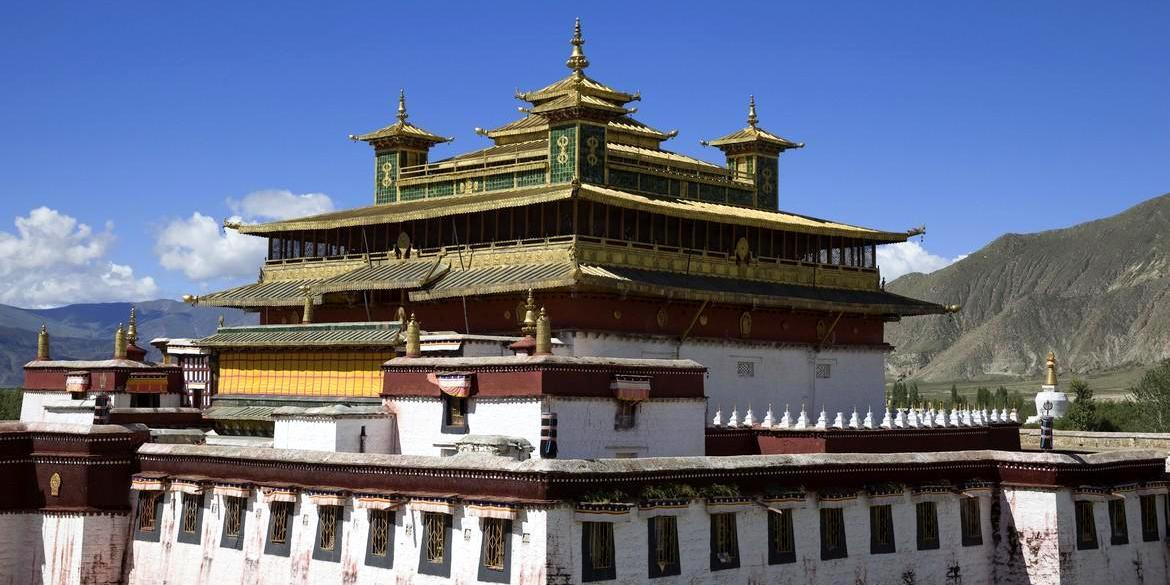
-
Architectural Uniqueness: Samye Monastery is celebrated for its unique design that embodies the Buddhist cosmology. The central temple, known as the Utse, represents Mount Meru, the center of the universe in Buddhist, Hindu, and Jain cosmology. This temple is surrounded by a series of smaller temples and buildings, which are laid out to represent the continents and oceans in the Buddhist cosmological map. The layout is a three-dimensional mandala, making Samye not only a monastery but also a monumental depiction of the Buddhist universe.
-
Cultural and Historical Significance: The foundation of Samye marks a pivotal moment in Tibetan history—the period when Buddhism was formally introduced and established as the state religion, integrating with the local Bon traditions. This was largely orchestrated by the Indian Buddhist master Padmasambhava (Guru Rinpoche), who is revered for his role in sanctifying the ground of Samye and combating the local spirits opposed to Buddhism. His influence is evident in the monastery’s artworks and rituals.
-
Spiritual Practices and Studies: Samye Monastery has been a center of spiritual education and practice for centuries. It was here that the famous "debates of Samye" took place, which were crucial in determining the course of Tibetan Buddhism. The monastery practices Nyingma, the oldest of the Tibetan spiritual traditions, and it has served as a vital retreat for meditation and religious study.
-
Pilgrimage Site: For pilgrims, Samye Monastery is a destination of immense importance. Its sacred grounds, ancient artifacts, and the very atmosphere of the place are considered to be imbued with spiritual power. Pilgrims often perform a kora, a ritual circumambulation, around the monastery, engaging with its numerous chapels, shrines, and stupas.
-
Visiting Samye Monastery: The journey to Samye is part of the spiritual experience, often involving a ferry crossing or a walk across the vast, open landscapes of central Tibet. The monastery’s location, surrounded by barren mountains and sand dunes, alongside the lush river valleys, highlights the natural diversity of Tibet. Visitors and pilgrims can stay in guesthouses within the monastery, allowing them to experience the rhythm of monastic life.
Samye Monastery offers a profound glimpse into the spiritual and cultural tapestry of Tibet. Its historical depth, architectural beauty, and religious significance make it a cornerstone of any visit to Tibet, appealing to both the devout and the curious alike.
Yamdrok Lake
Yamdrok Lake, one of the three sacred lakes in Tibet, is revered not only for its spiritual significance but also for its breathtaking beauty. Often described as a turquoise jewel set among high mountains, the lake is located roughly 100 kilometers southwest of Lhasa and is a key highlight for any traveler exploring the region.
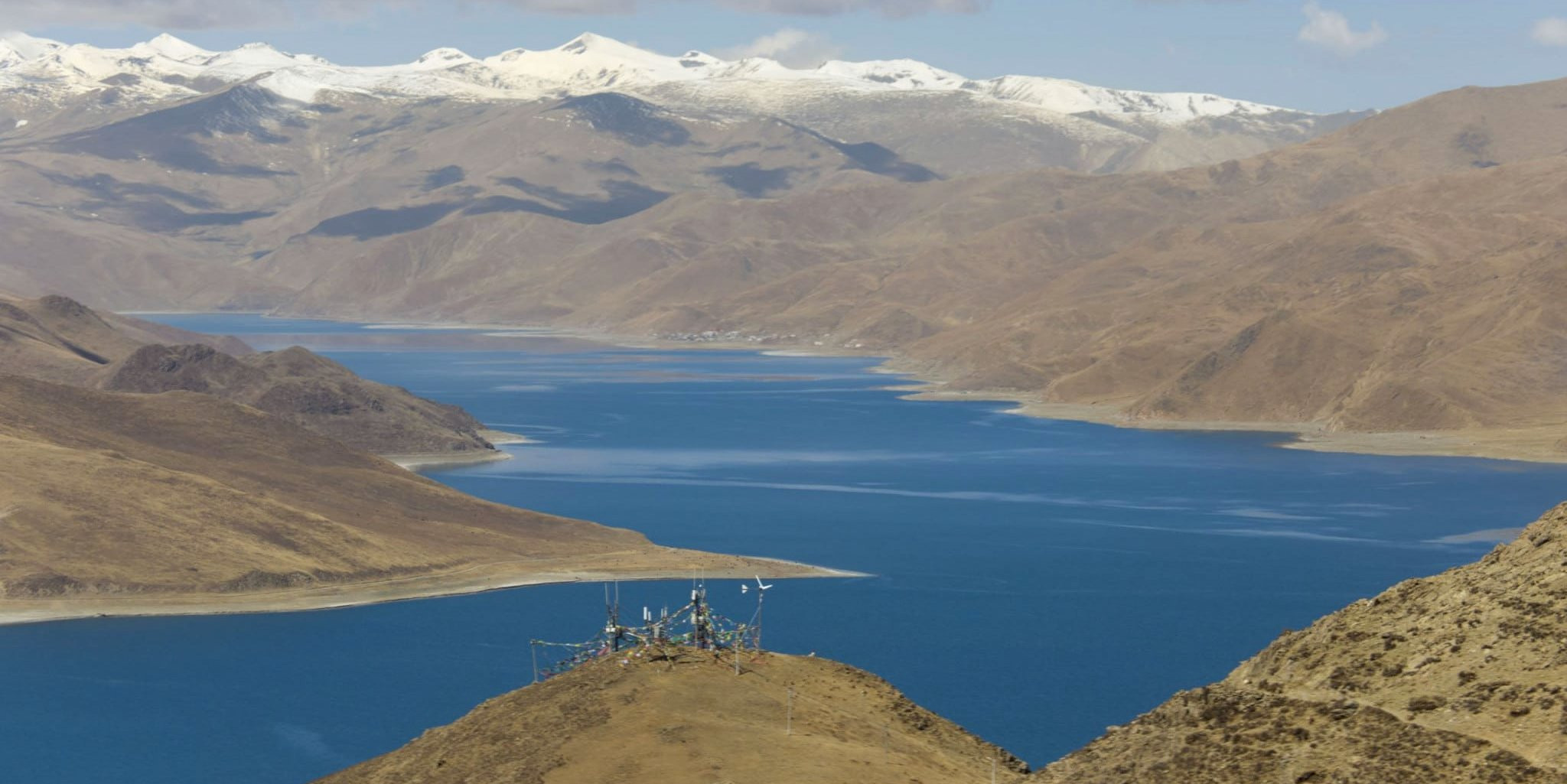
-
Natural Splendor and Location: At an elevation of over 4,400 meters (about 14,435 feet), Yamdrok Lake is a stunning example of the natural beauty that characterizes the Tibetan Plateau. The lake spans approximately 638 square kilometers, with its twisting and turning body of water resembling a scorpion from above. Surrounded by snow-capped peaks and fed by numerous small streams, Yamdrok has an ethereal quality, with intense blue waters that change shades depending on the sunlight.
-
Spiritual Importance: In Tibetan Buddhism, Yamdrok Lake is considered to be a talisman and is believed to be able to determine the reincarnation of the Dalai Lama. According to local beliefs, senior lamas travel to the lake to perform rituals and after receiving visions, they can identify the next Dalai Lama. This deep spiritual connection makes the lake a pilgrimage site, attracting visitors from all over Tibet and beyond.
-
Ecological and Wildlife Aspects: The area around Yamdrok Lake supports a rich variety of flora and fauna. The lake itself is home to numerous species of fish, while the surrounding pastures are frequented by herds of yaks and domestic sheep. Birds, particularly wild ducks and other migratory species, are commonly seen during the appropriate seasons, making it a favorite spot for birdwatchers.
-
Tourism and Access: The lake is easily accessible via a paved road that leads from Lhasa to the lake, making it a popular day trip for tourists. The route provides scenic views of the Tibetan landscape and passes by several small villages and Tibetan monasteries, which add to the cultural experience of the visit. At the lake, visitors can enjoy picturesque picnics, short hikes, and photographic opportunities, with several viewpoints established around the lake offering panoramic views.
-
Conservation Efforts: As tourism increases, conservation concerns grow, focusing on maintaining the pristine condition of the lake and its surroundings. Efforts are made to balance visitor access with environmental sustainability, ensuring that Yamdrok Lake remains a cherished natural and spiritual resource for future generations.
Yamdrok Lake is more than just a natural wonder; it is a place of profound peace and spiritual power. Visiting the lake offers a chance to connect with the ancient traditions and beliefs of Tibetan Buddhism and to experience the awe-inspiring beauty of the Tibetan Plateau. Whether you seek spiritual insight, natural beauty, or a peaceful retreat from the modern world, Yamdrok Lake promises an enriching and memorable experience.
Tashilhunpo Monastery
Tashilhunpo Monastery, located in the city of Shigatse, the second-largest city in Tibet, is one of the most important monasteries in the region. It serves as the traditional seat of the Panchen Lama, who is considered one of the most important religious leaders in Tibetan Buddhism, second only to the Dalai Lama.
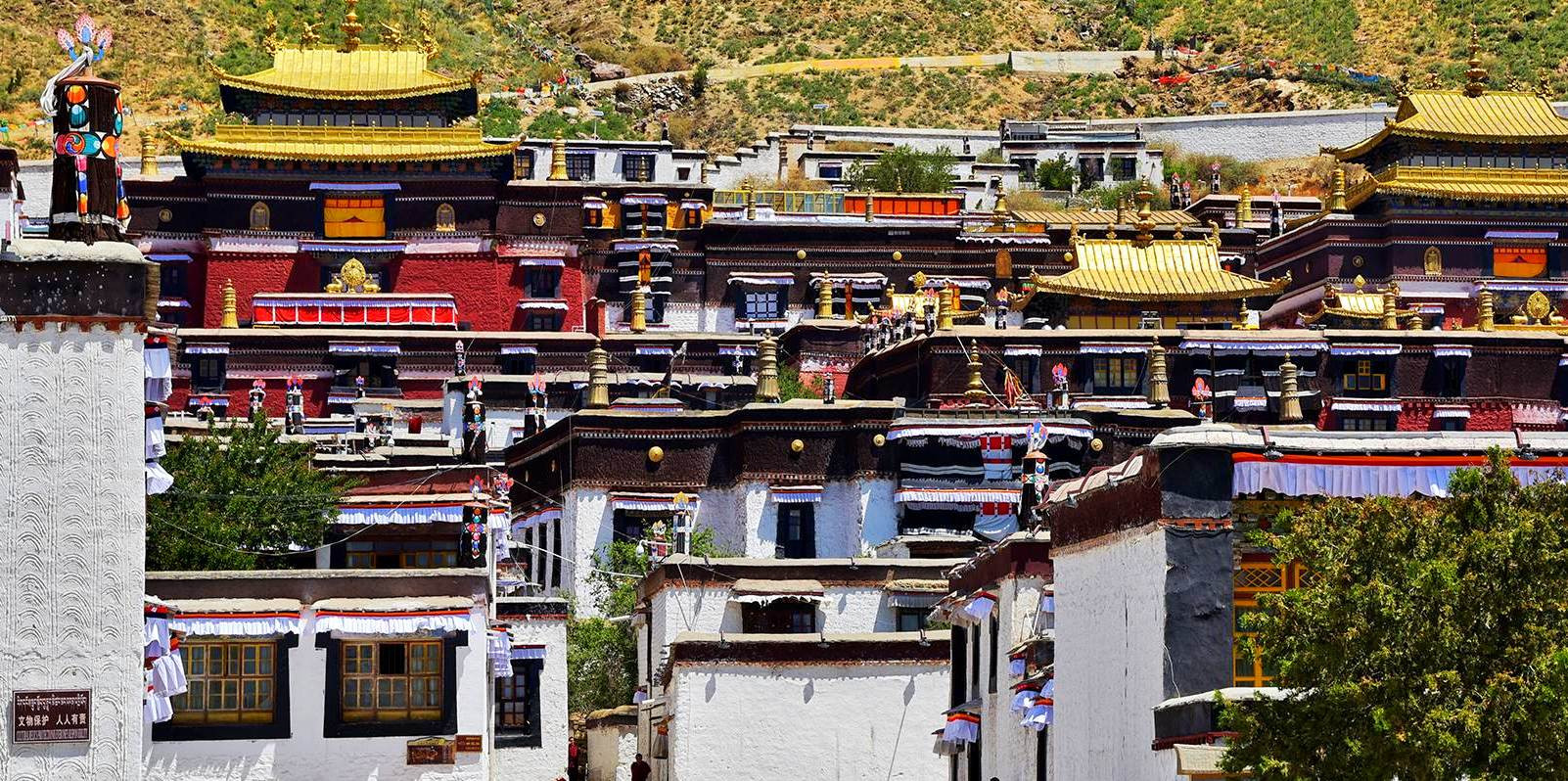
-
Historical Background: Founded in 1447 by the First Dalai Lama, Gedun Drupa, Tashilhunpo Monastery has been a major center of spiritual and political power in Tibet. Its significance grew especially after the Fourth Panchen Lama took residence, making it the main center for the Panchen Lamas.
-
Architectural and Artistic Significance: The monastery is renowned for its grandiose structure, sprawling over nearly 70,000 square meters. Its buildings are a striking example of traditional Tibetan architecture, featuring vast white walls and golden roofs that gleam under the sun. Inside, the monastery houses many chapels and temples, each richly decorated with murals, thangkas, and statues that depict various aspects of Buddhist theology and mythology.
-
Key Attractions: One of the most impressive sights within Tashilhunpo Monastery is the Maitreya Chapel, which houses a gigantic statue of the Maitreya Buddha. Standing at about 26 meters high, it is the largest gilded statue in the world and was constructed using gold and precious stones, making it a significant pilgrimage site. Additionally, the monastery contains the tombs of the Panchen Lamas, elaborately decorated with gold, silver, and gems.
-
Cultural Significance: Tashilhunpo Monastery remains a vibrant religious site where daily rituals, prayers, and monastic activities continue to take place, preserving a centuries-old way of life. It is also a hub of education and learning, attracting scholars and monks who study Buddhist philosophy, astronomy, Tibetan medicine, and literature.
-
Festivals and Pilgrimage: The monastery is especially lively during festivals such as the Buddha Maitreya Festival. During this time, a giant thangka (Buddhist religious painting) is unveiled, drawing thousands of pilgrims and visitors who come to receive blessings and view the sacred artifact. These festivals are not only religious gatherings but also opportunities for the local community to come together and celebrate their cultural heritage.
-
Visiting Tashilhunpo Monastery: For travelers, Tashilhunpo offers a profound glimpse into the spiritual practices and community life of Tibetan Buddhism. The monastery's location in Shigatse provides easy access for tourists visiting the region. Visitors can explore the monastery's expansive courtyards, intricate chapels, and absorb the peaceful yet powerful atmosphere of this sacred site.
Tashilhunpo Monastery is a treasure trove of cultural, historical, and spiritual wonders, offering visitors a unique and insightful experience into the heart of Tibetan Buddhism and the profound legacy of the Panchen Lamas.
Ganden Monastery
Ganden Monastery is one of the "great three" Gelug university monasteries of Tibet, along with Sera and Drepung Monasteries. Founded by Tsongkhapa in 1409, who was also the founder of the Gelug school of Tibetan Buddhism, Ganden is situated approximately 50 kilometers east of Lhasa, at an altitude of 4,300 meters (about 14,107 feet), making it the highest of the three university monasteries.
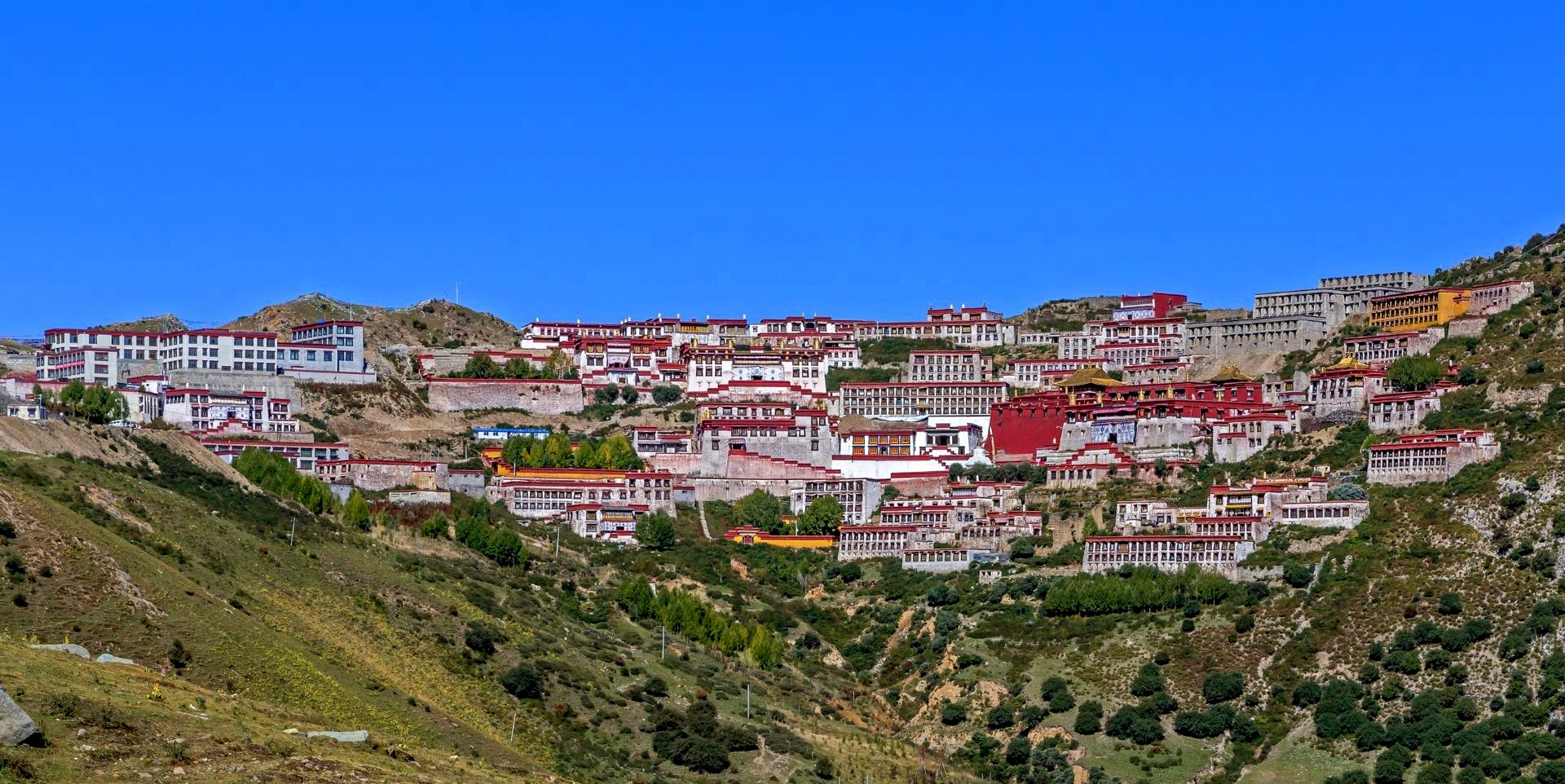
-
Architectural Features and Layout: Ganden Monastery's setting is dramatic and scenic, perched on the ridge of Wangbur Mountain, providing panoramic views of the surrounding valleys and the snaking Kyi-chu River. The original structure of Ganden was destroyed during the Cultural Revolution but has since been largely rebuilt, and today it stands as a symbol of resilience and religious devotion. The monastery consists of two main colleges — Jangtse and Shartse — and several smaller temples, each featuring traditional Tibetan architectural elements and intricate decorations.
-
Spiritual Significance: Ganden is the principal seat of the Gelugpa school of Tibetan Buddhism and was the original monastery of this order. It holds special spiritual significance as it houses Tsongkhapa’s tomb. The monastery is also known for its unique form of debate, which is an essential part of the learning process for monks, involving clapping and emphatic gestures to emphasize points of doctrine.
-
Cultural and Religious Activities: Ganden Monastery hosts an array of religious and cultural activities, most notably the Ganden Thangka Unveiling, which occurs annually in the summer. During this festival, a gigantic thangka of Tsongkhapa is displayed on the monastery's walls, drawing pilgrims and tourists alike. Monks at Ganden engage in daily prayers, meditation, and religious studies, maintaining deep-rooted traditions that have been passed down through centuries.
-
Pilgrimage and Trekking: For visitors, Ganden Monastery not only offers spiritual insight but also provides opportunities for trekking and exploration. The Ganden Kora, a circumambulation route around the monastery, offers breathtaking views and a chance to engage in a practice followed by pilgrims for centuries. Additionally, the Samye Trek, a popular trekking route that starts at Ganden and ends at Samye Monastery, allows trekkers to experience some of Tibet’s most stunning landscapes and sacred sites.
-
Visiting Ganden Monastery: Visiting Ganden offers a glimpse into the vibrant religious life and practices of the Gelug sect. The journey to the monastery, involving a winding drive up the mountain, presents awe-inspiring vistas of the natural beauty that defines the Tibetan Plateau. While the altitude might be challenging for some, the spiritual and cultural rewards of visiting Ganden are immense.
Ganden Monastery remains a beacon of Tibetan Buddhism, symbolizing the enduring spirit and devotion of the Tibetan people and their religious heritage. It continues to be a place of learning, worship, and pilgrimage, rich in history and spiritual significance.
Rongbuk Monastery
Rongbuk Monastery holds the distinction of being the highest monastery in the world, situated at an elevation of about 5,000 meters (16,400 feet) near the base of the north side of Mount Everest. Its unique location makes it an essential stop for climbers heading to the Everest Base Camp from the Tibetan side and offers some of the most spectacular views of Mount Everest available.
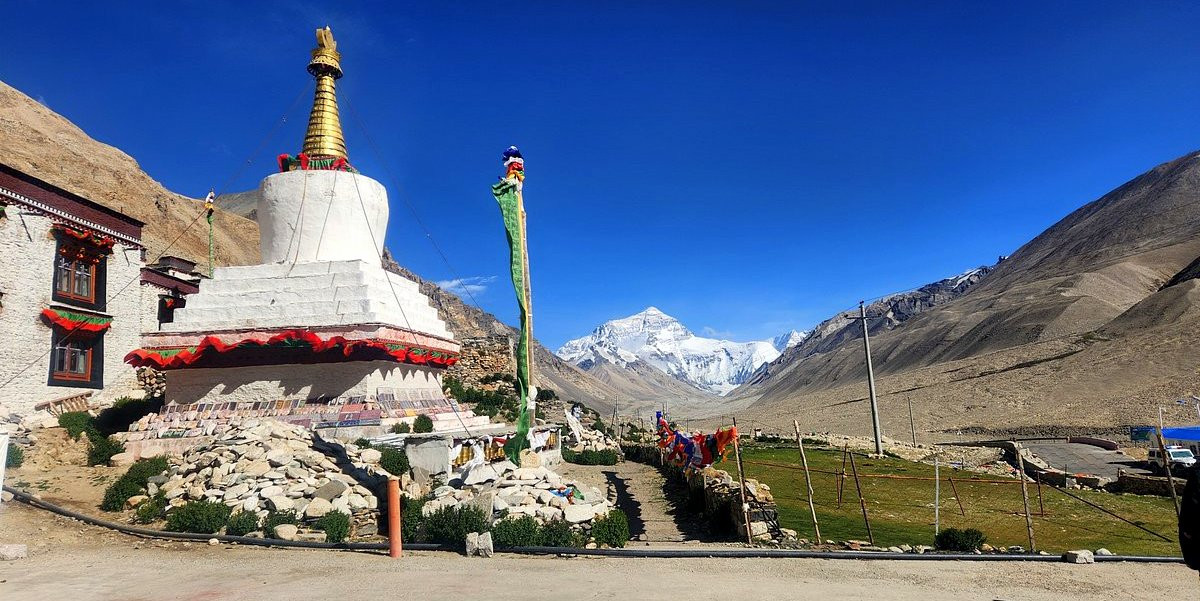
-
Historical and Geographical Context: Established in 1902 by a Nyingmapa Lama, Rongbuk Monastery lies in a valley carved by glaciers with a direct view of the north face of Mount Everest. It has historically been a place of religious retreat and meditation, with monks and nuns living in small meditation huts scattered around the monastery.
-
Cultural and Spiritual Significance: Rongbuk Monastery is a significant spiritual site, used as a rest and acclimatization point for climbers and trekkers heading to Everest Base Camp. It is often considered the gateway to Everest and holds religious importance for offering blessings and rituals for climbers who seek spiritual safety and success in their endeavors. The monastery is affiliated with the Nyingmapa sect of Buddhism and continues to function as a place of worship and solitude, deeply intertwined with the local communities and climbing culture.
-
Architectural Features: Though small, Rongbuk Monastery is rich in cultural artifacts and religious significance. The monastery complex includes prayer halls adorned with murals and Tibetan Buddhist thangkas, which depict various aspects of Buddhist mythology and teachings. The simplicity of its construction, featuring whitewashed walls and traditionally decorated windows, stands in contrast to the stark and rugged landscape that surrounds it.
-
Tourism and Accessibility: The journey to Rongbuk offers an unparalleled opportunity to witness the breathtaking scenery of the Himalayas. The monastery has become a tourist destination, not only for those who are climbing but also for those who wish to see the world's highest peaks up close. Simple guesthouse facilities are available for visitors who want to stay overnight, providing a unique experience of living in the highest monastery in the world.
-
Conservation and Challenges: Given its remote location and extreme weather conditions, maintaining Rongbuk Monastery is challenging. Efforts are made to preserve the site's cultural heritage and environmental integrity, especially in light of the increasing footfall from tourism which brings both economic benefits and ecological pressure.
Visiting Rongbuk Monastery is a profound experience, offering a mix of awe-inspiring natural beauty, deep spiritual heritage, and a unique perspective on the lives of those who reside at the edge of the Earth’s highest altitudes. For many, it’s a place that combines spiritual pilgrimage with the adventure of a lifetime, making it a truly unique destination in Tibet.
Yungbulakang Palace
Yungbulakang Palace, often regarded as Tibet's first palace, is steeped in myth and history. Located in the Yarlung Valley, this ancient structure is perched on a hilltop and offers spectacular panoramic views of the surrounding fertile plains and towering mountains. It is considered the cradle of Tibetan civilization and plays a crucial role in the historical and cultural narrative of the region.
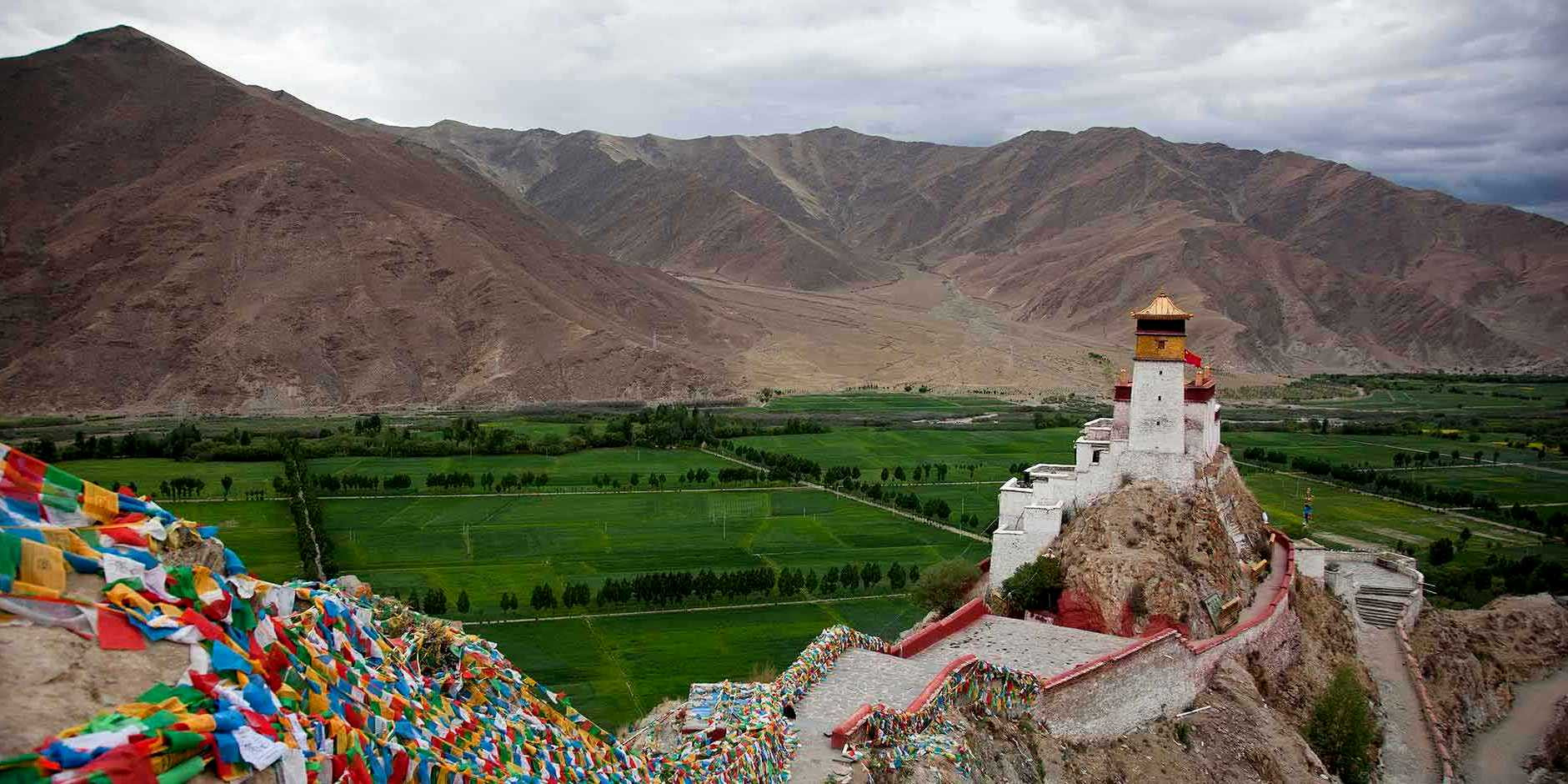
-
Historical Significance: Yungbulakang is believed to have been built in the 2nd century BC as a fortress for the first Tibetan king, Nyatri Tsenpo, who is said to have descended from the heavens. It later served as a summer palace for the kings of Tibet and was eventually converted into a monastery during the reign of the fifth Dalai Lama in the 17th century, reflecting the intertwining of secular and religious power in Tibetan history.
-
Architectural Features: The architecture of Yungbulakang is distinctive, reflecting elements of both a fortress and a palace. It rises imposingly from a craggy ridge, constructed in a layered design that follows the contour of the hill on which it stands. The palace is composed of a multi-storied main tower with additional buildings that have been added over the centuries. Inside, the palace houses ancient statues and murals that depict important events in Tibetan history and mythology.
-
Cultural and Religious Importance: As one of the oldest structures in Tibet, Yungbulakang is a place of pilgrimage for those wishing to connect with the ancient origins of Tibetan culture. It holds several chapels, one of which contains a revered statue of Chenresig (Avalokiteshvara), the bodhisattva of compassion, who is a central figure in Tibetan Buddhism. The palace also hosts various local festivals, which are a colorful portrayal of Tibetan cultural traditions.
-
Tourism and Accessibility: The site is accessible to tourists and is often included in travel itineraries as a day trip from Tsedang, the nearest major town. The climb to the palace is steep but manageable, and visitors are rewarded with stunning views of the valley below and a firsthand experience of a monument that links directly to the mythic and historic past of Tibet.
-
Conservation Efforts: Conservation efforts are ongoing to preserve the structural integrity and historical artifacts of Yungbulakang, especially considering its vulnerability to natural elements and the wear and tear due to tourism. These efforts are vital for maintaining the site's cultural heritage and ensuring that future generations can continue to experience its historical significance.
Visiting Yungbulakang Palace provides a unique window into the origins of Tibetan civilization and offers insights into the early religious and cultural transformations of this mystical region. It is a testament to the rich history of Tibet and remains a symbol of its enduring legacy.
Tips for Top 10 best places to visit in Tibet
Visiting Tibet is a profoundly enriching experience, filled with stunning landscapes, deep spiritual presence, and rich cultural heritage. To ensure you have a memorable and respectful trip, here are some practical tips for visiting the top 10 best places in Tibet:
-
Acclimatize Properly: Tibet is a high-altitude region, and altitude sickness can be a concern. Spend a few days in Lhasa or another lower-altitude area when you first arrive to adjust to the elevation before venturing to higher locations like Mount Everest Base Camp or Namtso Lake.
-
Respect Local Customs: Tibet has a deeply ingrained culture and religious practices. Show respect by dressing modestly, removing your shoes before entering religious sites, and walking clockwise around temples and other sacred sites.
-
Travel Permits: Ensure you have all the necessary permits for travel in Tibet. This includes the Tibet Travel Permit, which is required for entry into Tibet, as well as additional permits for certain areas like the Mount Everest Base Camp.
-
Hire Local Guides: Local guides not only provide insights into the cultural and historical contexts of the places you visit but also facilitate interactions with local communities. They can enhance your understanding of Tibetan customs and help navigate language barriers.
-
Best Time to Visit: The best time to visit Tibet is from April to October, with the most favorable weather conditions. This period avoids the harsh winter cold and the summer monsoon season, offering clearer skies and more accessible roads.
-
Health Precautions: Carry medication for altitude sickness, stay hydrated, and protect yourself from the sun, which can be particularly intense at high altitudes. Prepare for basic first aid and consult with a physician about travel to high-altitude areas if you have health concerns.
-
Responsible Travel: Practice environmental consciousness by minimizing waste, using water sparingly, and respecting wildlife and natural landscapes. Take only photos, leave only footprints.
-
Connectivity Issues: Be prepared for limited internet access and sporadic cell service in remote areas like Everest Base Camp and Namtso Lake. Inform family and friends of your itinerary and expected periods of inaccessibility.
-
Cultural Engagement: Take time to engage with the local culture through food, music, and festivals. Attend a Tibetan opera performance, try local Tibetan dishes, and if your visit coincides with a festival, participate respectfully in the celebrations.
-
Documentation and Cash: Keep your documents handy, as checkpoints are common. Also, carry sufficient cash since ATMs may not be widely available outside of urban centers like Lhasa, and digital payments might not always be accepted.
Following these tips will help ensure that your visit to the top places in Tibet is enjoyable, respectful, and enriching. Each site offers a unique glimpse into the heart and soul of Tibet, providing memories that will last a lifetime.
Best Time for Top 10 best places to visit in Tibet
When planning a trip to Tibet, timing is crucial to ensure you get the most out of your visit to this unique and beautiful region. The best time to visit largely depends on weather conditions and local festivals, which can significantly enhance your travel experience. Here’s a guide to help you determine the optimal time to explore Tibet’s top destinations:
General Best Time to Visit Tibet
The overall best months to travel to Tibet are from April to October. During these months, the weather is relatively mild, the skies are clearer, and the roads are more accessible, which is essential for travel in such rugged terrain.
Spring (April to June)
-
Weather: Cool to warm days with clear skies, ideal for photography and outdoor activities.
-
Activities: This period is perfect for outdoor exploration and visiting various cultural and historical sites.
Summer (July to August)
Autumn (September to October)
Winter (November to March)
-
Weather: Very cold, especially in rural and high-altitude areas. Some sites might be inaccessible due to snow.
-
Activities: Fewer tourists result in a more intimate experience at cultural sites, though physical access might be challenging.
Key Considerations
-
Altitude Acclimatization: Regardless of when you visit, allow time to acclimatize to the high altitude, starting your trip in areas of lower elevation.
-
Festivals: Aligning your visit with local festivals can provide deeper insights into Tibetan culture. Check festival dates as they vary each year based on the Tibetan lunar calendar.
- Travel Permits: Ensure all your travel permits are arranged well in advance, as some areas require special permissions.
By choosing the right time based on these factors, you can have a safer, more enjoyable, and culturally rich experience visiting Tibet.
FAQs for Top 10 best places to visit in Tibet
Q: What travel documents do I need to visit Tibet?
A: To visit Tibet, you must obtain a Chinese visa and a Tibet Travel Permit. Additional permits are required for restricted areas like Everest Base Camp. These permits can only be arranged through a registered travel agency.
Q: When is the best time to visit Tibet?
A: The optimal time to visit Tibet is from April to October. During these months, the weather is milder, and the roads are more accessible. This period also coincides with many vibrant local festivals.
Q: How should I prepare for the high altitude in Tibet?
A: Start by acclimatizing in Lhasa or another low-altitude area for a few days upon arrival. Stay hydrated, consume high-calorie foods, and consult a healthcare provider for advice on preventing and treating altitude sickness.
Q: What are the must-see places in Tibet?
A: Essential sites in Tibet include the Potala Palace, Jokhang Temple, Namtso Lake, Mount Everest Base Camp, Samye Monastery, Yamdrok Lake, Tashilhunpo Monastery, Ganden Monastery, Rongbuk Monastery, and Yungbulakang Palace.
Q: What should I pack for a trip to Tibet?
A: Bring warm clothing in layers, sun protection (sunglasses, sunscreen, hat), sturdy shoes, a first-aid kit, regular medications, and high-energy snacks for trekking.
Q: Are there specific cultural customs I should be aware of?
A: Yes, show respect by dressing modestly, especially at religious sites, walking clockwise around temples and sacred objects, and always asking for permission before taking photos of people or ceremonies.
Q: What kind of food can I expect in Tibet?
A: Tibetan cuisine typically includes tsampa (barley flour), butter tea, yak meat, and dumplings. Vegetarian options are limited outside of urban centers.
Q: Is it safe to travel in Tibet?
A: Tibet is generally safe for travelers. However, due to its sensitive political climate, it's important to stay updated on current events, follow local laws, and adhere to the advice of your tour operator.
Q: How can I respect Tibet’s environment during my visit?
A: Follow Leave No Trace principles: carry out all trash, conserve water, avoid disturbing wildlife, and stick to established trails. Supporting local conservation initiatives and eco-friendly tours also helps preserve Tibet's natural environments.
Q: Can I explore Tibet independently?
A: Non-Chinese citizens cannot travel independently in Tibet. All visits must be organized through an official tour with a recognized travel agency.
For the Nepal tour, please click here.
If you are looking for different kinds of Nepal Tours or Trekking Packages, feel free to contact us.
